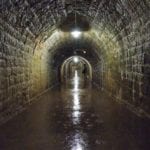 Weird Stuff
Weird Stuff  Weird Stuff
Weird Stuff  Animals
Animals 10 Inspiring Tales of Horses Being Human
 Mysteries
Mysteries Top 10 Haunting Facts About the Ghost Ship MV Alta
 History
History 10 Surprising Stories About the Texas Rangers
 Humans
Humans 10 Philosophers Who Were Driven Mad by Their Own Theories
 Miscellaneous
Miscellaneous 10 Video-Game-Worthy Weapons and Armors from History
 Weird Stuff
Weird Stuff 10 Psychics Who Accurately Predicted Wartime Events
 The Arts
The Arts 10 Pieces of Art Inspired by a Broken Heart
 Health
Health 10 Science Fiction-Sounding New Medical Treatments
 History
History 10 Surprising Facts About the Father of Submarine Warfare
 Weird Stuff
Weird Stuff 10 Times Real Laws Were Based on Bizarre Hypotheticals
 Animals
Animals 10 Inspiring Tales of Horses Being Human
 Mysteries
Mysteries Top 10 Haunting Facts About the Ghost Ship MV Alta
Who's Behind Listverse?

Jamie Frater
Head Editor
Jamie founded Listverse due to an insatiable desire to share fascinating, obscure, and bizarre facts. He has been a guest speaker on numerous national radio and television stations and is a five time published author.
More About Us History
History 10 Surprising Stories About the Texas Rangers
 Humans
Humans 10 Philosophers Who Were Driven Mad by Their Own Theories
 Miscellaneous
Miscellaneous 10 Video-Game-Worthy Weapons and Armors from History
 Weird Stuff
Weird Stuff 10 Psychics Who Accurately Predicted Wartime Events
 The Arts
The Arts 10 Pieces of Art Inspired by a Broken Heart
 Health
Health 10 Science Fiction-Sounding New Medical Treatments
 History
History 10 Surprising Facts About the Father of Submarine Warfare
10 Odd And Eerie Tales Of London’s Victorian Cemeteries
When we think of Victorian England, rarely do we think of the smell. But during the early 19th century, there was a very real crisis going on—a burial crisis. More and more people were living (and dying) in London, and cemeteries were filling up fast. The problems that created, the cemeteries that were established to deal with the overflow of bodies, and the steps that were taken to protect the dead make for some very strange and very eerie tales.
10 The Anatomy Inspectorate
For many people, Victorian England was a tough place and time to be alive, but body-snatchers and resurrection men were doing a brisk trade that made it just as dangerous to be dead. The practice of body-snatching was so widespread that steps needed to be taken to help keep the dead resting in peace.
The Anatomy Inspectorate was an organization created to help keep the peace. Medical schools and hospitals still needed corpses for dissection, but it was widely agreed that they needed to ethically procure them. The 1831 Anatomy Bill was finally passed (only after previous incarnations of the bill had been shot down), and it made certain types of corpses acceptable for medical use, like those unclaimed by relatives and those of people who had died in workhouses. The bill also introduced the Anatomy Inspectorate as agents of the dead. They were tasked with keeping track of licenses and paperwork to determine whether or not schools were obtaining their bodies ethically.
James Somerville was the first inspector for England and Wales. He served for a decade, convincing people to send unclaimed bodies to medical facilities in the hopes that creating a supply would cut down on grave robbing.
But there was only so much that one man could do. Without enough bodies to meet demand and graves still being robbed, Somerville became a middleman between the hospital and the cemetery.
He suggested that grave robbing take place outside the cemetery, before protesting relatives were given the bodies. Workhouses in particular were easy to convince to send bodies off for minimal dissection—under the condition they’d be returned before the family came to claim them. Somerville gave guidance on how teachers could put the body back together again to hide the fact that anything had been done to them. Considering that the bodies often weren’t removed from coffins and shrouds by the family, people were rarely the wiser.
By 1842, Somerville was removed from his position amid a storm of controversy, accused of authorizing burials in unconsecrated ground and playing favorites among the recipients of the corpses.
9 Beatrix Potter’s Inspiration
Who doesn’t love Peter Rabbit? Beatrix Potter is famous for her cast of beloved animals, but their origins seem to have been in an unexpected, far less cheery place than the tales would lead her young readers to believe.
From 1863 to 1913, Potter lived in West London, not far from one of the city’s “Magnificent Seven” cemeteries: Brompton. Almost a century later, one of the members of the Friends of Brompton Cemetery, a preservation committee, decided to research a rumor he’d heard. Burial records at Brompton—all 250,000 of them—had only recently been computerized, which finally made it possible for him to start searching.
Buried in Brompton are Mr. Nutkins, Mr. Brock, Jeremiah Fisher, Mr. McGregor, and Peter Rabbett himself. What might be chalked up to a coincidence is given quite a bit of credence because Potter lived nearby. An early edition of her story about Jeremy Fisher refers to him as Jeremiah Fisher, a name on a Brompton grave that’s still quite legible.
According to the Beatrix Potter Society and Judy Taylor, Potter’s biographer, there was always a rumor that the names came from gravestones. No one had ever been able to prove it, but the recent computerization and dogged search by James Mackay lends credence to the theory.
They’ve also found many of the actual gravestones in the cemetery, and the Friends are considering making it into a scavenger hunt for the children—finding the graves of their favorite Beatrix Potter characters.
8 George Alfred Walker’s Gatherings From Graveyards
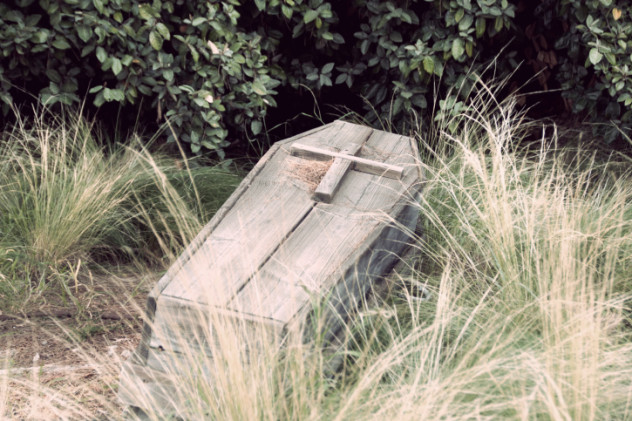
London cemeteries and burial practices underwent a major reform during the Victorian era. With population of the city skyrocketing, grave robbers and resurrection men plying their nightly trade, and outbreaks of cholera and other illnesses, information needed to be spread about the morbid situation.
It was George Alfred Walker that got the ball rolling, with the release of his work Gatherings from Graveyards. Every area had their problems, sure, but it was Walker who published them all in one nightmarish look at the problems of the dead.
He wrote of the smell that came with the city’s urban graveyards, the result of bodies being exhumed and reburied—a common practice when space was limited. Bodies would be dug up, dismembered, and reburied. When that happens, pieces get dropped and lost. Members of the clergy were also looking the other way when it came to the resurrection men, as they were usually getting a cut of the profits.
There was also the practice of “tapping” coffins. Members of the clergy, undertakers, or gravediggers would drill holes through coffins to release the gases that were building up inside. When bodies were exhumed for new burials, coffins would be sold for firewood. It wasn’t unheard of for human bones to be sold for fertilizer.
Walker, who earned the nickname “Graveyard Walker,” was most concerned about the smell. The miasma theory of disease was still popular. Gravediggers reportedly suffocated from the smell rising from improperly tended graves. His shining example of malpractice was at Enon Chapel, where those attending church services needed to cover their mouths and noses to keep from breathing in the fumes of the dead, and worshipers often found “body bugs” in their own clothes and hair when they got home.
Walker lobbied fiercely for the cemetery reform that he knew would help clean up the city. Surprisingly, his petitions to the government met with opposition until a cholera epidemic swept through the city and created even more bodies that needed to be disposed of.
7 Cross Bones Cemetery
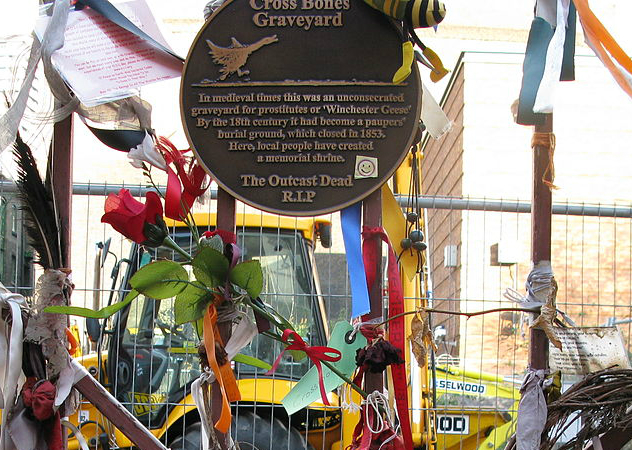
Cross Bones Cemetery has a history that stretches back to the 12th century when it was the final resting place for the women of ill repute who worked the South Bank. For these women, burial in consecrated ground was forbidden, so they ended up in Cross Bones Cemetery.
For centuries, the area was one of London’s most notorious slums. Throughout the 1830s and 1840s, more and more bodies were interred in the cemetery, most in unmarked graves. Bodies tended not to stay there for long because of its close proximity to Guy’s Hospital and the understanding no one would take notice if the graves were disturbed. The cemetery was closed in 1853. In 1883, it was sold with the idea that it was going to be transformed into a building site. That was short-lived, though. Nothing was permitted to be built on the site under the Disused Burial Grounds Act of 1884.
Because space in a city like London is always at a premium, it wasn’t long before someone found a use for it. Cross Bones Cemetery became a carnival, only to be kicked off the cemetery grounds when nearby residents complained about the noise. It’s now used for storage.
At the time the cemetery was closed, the clergy was concerned about how deeply the coffins were buried. There were so many there that they were covered with little more than a dusting of dirt—less than 60 centimeters (2 ft) in many places. In the 1990s, the site was excavated prior to the construction of an underground power station. The crew had six weeks to dig and removed 148 skeletons from only the top layers. This was less than 1 percent of the bodies thought to be buried there. More than half were of children.
6 Jane Clouson’s Unsolved Murder
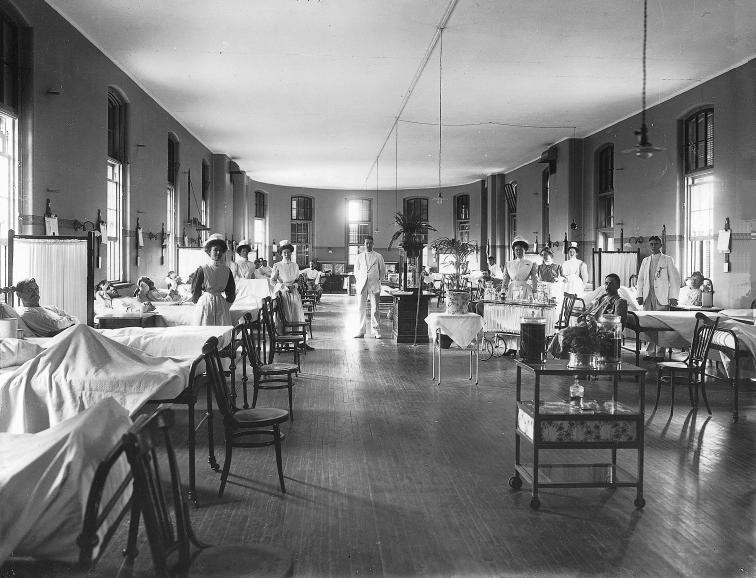
The story of Jane Maria Clouson is a heartbreaking reminder that with every grave, there’s a story. Her gravestone is in the Brockley and Lady Cemetery, where she was conveyed by horse-drawn carriage and carried by women dressed as maids. The trial that surrounded her murder had London in an uproar. The story was reported as a clear case of class discrimination.
On April 25, 1871, police found 17-year-old Jane Maria Clouson on Kidbrooke Lane, covered in blood. She died a few days later in Guy’s Hospital. Her story then started to unfold. Until shortly before her attack, she had been employed as a maid in the household of Ebenezer Pook and his family. Even though most people described her as polite and respectable, she had been dismissed from the family’s service only about a week and a half before she was beaten so badly that the policeman who found her reported that her brain had been visible through the blood. (It wasn’t, but that was his first impression.)
Upon her death, claims circulated that she had been in a relationship with Pook’s son, Edmund. Edmund denied it, claiming that she was “dirty.” She had obviously been in a relationship with someone, though, as she was two months pregnant when she died.
A nearby gardener discovered the murder weapon—a hammer—and a local hardware store testified that Edmund had purchased it not long before the murder. He had blood on his shirt, and his arms were scratched. Edmund was initially found guilty, but he was deemed innocent on appeal for a lack of evidence.
London was outraged. The police were accused of not pursuing other avenues of inquiry. The public largely believed that the family’s connections had spoken more loudly than justice for the maid. In the fallout after the trial, the Pooks attempted to sue people for slander. This offense was so widespread, though, that they left London instead.
In 1873, a newspaper in Australia reported that a young man had been detained there for the murder, but authorities didn’t end up holding him. Scotland Yard didn’t think he was involved.
5 Hyde Park’s Pet Cemetery
Take a stroll through London’s Hyde Park and you might stumble across a particularly heartbreaking little cemetery. From 1881 to 1915, the little cemetery was the final resting place for around 300 cherished pets.
The first was Cherry, a Maltese owned by the park gatekeeper’s friends. Cherry died on April 28, 1881. At a request from her owners, she was buried in the park where she and her family had spent so many happy afternoons. The next dog to be buried there was Prince, who belonged to the wife of the Duke of Cambridge. It wasn’t long before other pets were buried there, too.
Today, special arrangements need to be made to see the little pet cemetery. It’s an odd, eerie sight. There are rows and rows of tiny gravestones, most carved with names, dates, and inscriptions that are enough to break even the most stern of hearts.
Prince’s grave reads, “He asked for so little and gave so much.”
And then there’s Bobbit, whose marker reads, “When our lonely lives are over and our spirits from this earth shall roam, we hope he’ll be there waiting to give us a welcome home.”
4 The Dissection Specimen’s Graveyard
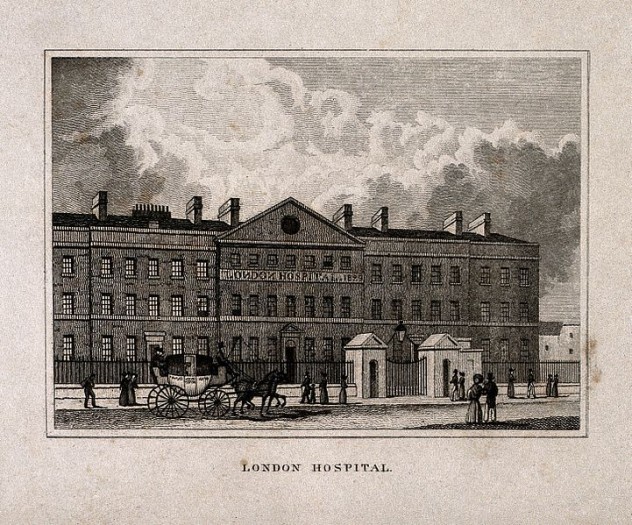
We’ve talked about how common the practice of stealing bodies and selling them to the medical community was. Something had to be done with the dissected remains afterward. No one knew exactly what happened to them until 2006, when London Hospital was getting ready for an expansion. Digging in an area where there’s so much history means that an archaeological survey is necessary before construction begins, and this one turned up an unexpected cemetery.
By the time they were done, they found the remains of about 262 people. We say “about” because most of the people were in pieces. Most of the bones had belonged to adults, and although there were coffins, there was no rhyme or reason to how they were buried, organized, or even filled. Some coffins had piles of feet or hands. Most of the bodies were men, most likely dock workers who had fallen victim to the harsh conditions they worked in every day. Some animal remains had been mixed in with the human remains, too.
Digging through hospital archives yielded records that said this overlooked cemetery had been used from 1825 to 1841, but there were no records of why. Bones speak for themselves, though, and the cuts to them indicate commonly used practices for autopsy and for separating the body into pieces for students to work on. The bones show student mistakes, too, like places where more than one attempt at sawing or cutting was made before getting it right. Some of the bones had iron pins in them, perhaps to be used as models for demonstrations.
Not all of the bodies showed signs of dissection and autopsy, and it’s thought that some patients who died at the hospital or in accidents on the grounds were buried there, like a bricklayer that fell to his death. Archaeologists suspect that the cemetery once held many more bodies that were at some point stolen from the grounds, returned as specimens, then perhaps interred all over again.
Aside from use on the dissection table, some of the bones tell some pretty brutal stories about life in Victorian London. Many of the male skulls show signs of broken noses, likely from fighting. There’s a high occurrence of tooth decay, and many specimens have grooves worn into their teeth from habitual pipe smoking. Female skeletons show damage to their feet from the fashionable shoes of the day. Many of the bones bore evidence that these people suffered from iron deficiency and rickets.
3 The Highgate Vampire
Highgate Cemetery is one of the most famous of all London’s Victorian cemeteries. First established in 1839, it’s now the final resting place of about 170,000 bodies. It’s a beautiful example of a Gothic garden cemetery, but it wasn’t until relatively late in its history that its most terrifying resident was reported to be stalking through the grounds.
Throughout the 1960s, the cemetery was in a state of disrepair. It was a favorite hangout for vandals and other shady characters. One such shady figure first reported seeing something even darker. According to this unnamed local, a shadowy figure was wandering through the cemetery at night. More and more people came forward with stories about the “King Vampire of the Undead.”
Some of the accounts given by people who reported encounters with the creature included things like getting inexplicably lost, running across black specters, and feeling an aura of dread and malice. Some even claimed to have been held motionless by a mysterious, life-draining force. People who previously walked their dogs through the cemetery found their canine companions so terrified they would only sit and howl. There were even reports of animals being found mysteriously dead.
In January 1970, the British Psychic and Occult Society started an investigation into the cemetery’s history. They found a number of cases that pointed to a long history of vampiric activity—including the case of Elizabeth Siddal, which we’ll talk about in a minute. That history was probably encouraged by Bram Stoker’s reference to the area as the final resting place of one of Dracula’s minions. The dark stories go back even farther into the past than that; the site was used as a plague pit in the 15th century. What started as claims of a mysterious, tall man dressed in black took on a decidedly darker turn.
Once word got out about the vampire, hundreds of people showed up at the gates to hunt him down. Stories and rumors had unleashed a bit of mass hysteria on the area. While the psychic society turned up nothing despite their searches, vandalism and corpse desecration were happening.
David Farrant, self-proclaimed vampire hunter and source for many of the claims, was eventually arrested for cemetery vandalism. He asserted that the crimes absolutely weren’t his doing and went on to form the Highgate Vampire Society.
2 The London Necropolis
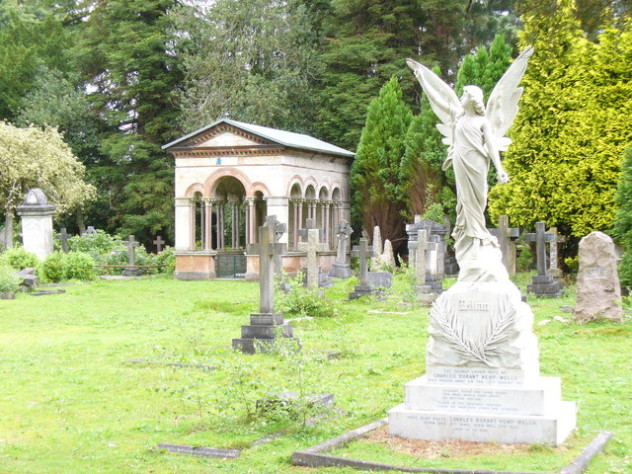
In 1849, Sir Richard Broun pitched an idea that would not only relieve congestion in the city’s cemeteries but also give families a chance to move the bones of their loved ones out of the reach of the resurrection men. The 2,000 acres he planned for London’s Necropolis was accessible by a train route from Waterloo to Southampton, a line that would become known as the Necropolis Railway.
There were protests against Broun’s plan, complete with typical Victorian concerns. The government officials in charge of approving the project were concerned about what would happen if someone had to share a train with another person of a lower class. There was also the idea that once a train car was used for the Necropolis Railway, it couldn’t be used on another line because no one would want to ride in a car that had been used to transport the dead.
Eventually, it was decided that there would be different classes of train cars, different tickets, and different transportation options and treatments befitting the social class the deceased belonged to. The trains started running in 1854, and it wasn’t long before the railway earned nicknames like the “dead meat express.”
And there were problems. The cemetery was a stone’s throw from the West Hill Golf Club. Golfers heading out to play a round would dress as mourners and get a lower fare. It was such a common practice that there’s still a footpath running from the station to the golf course’s clubhouse.
For further proof that we just can’t have nice things, there was also the abuse of the refreshment rooms at the stations. If there’s one thing that funerals need, it’s alcohol. The railway generously decided to provide it. This gesture led to more than a few drunken escapades. In one case, the return trip to London was filled with dancing mourners. In another, a conductor got so wasted while waiting for a service to conclude that he couldn’t get the train back to its destination.
When the numbers were crunched, they were only doing about 6.5 percent of the business they had been expecting. The number of services gradually decreased, but the Necropolis didn’t officially close until 1941.
1 Elizabeth Siddal And Dante Gabriel Rossetti
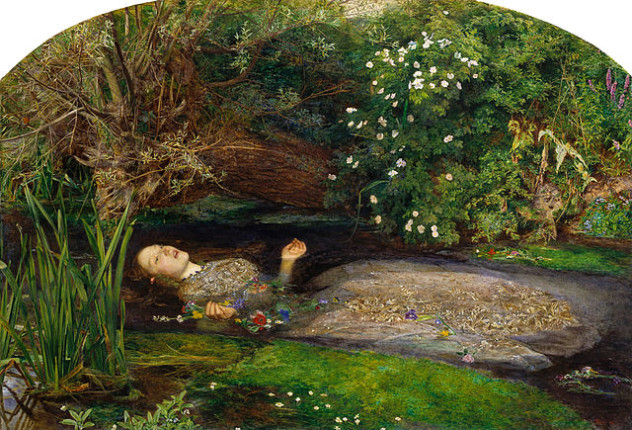
You’ve seen Elizabeth Siddal. Better known as Lizzie, she was the model for John Everett Millais’s Ophelia. By all accounts a sickly girl, Lizzie posed for the painting for hours submerged in a bathtub. A few years later, her work as an artist’s model would allow her to meet, fall in love with, and marry the man who would also make her infamous: Gabriel Rossetti.
Their marriage was short-lived. After being immortalized in Rosetti’s paintings and sketches, Lizzie died in February 1862. She was discovered by her husband with a bottle of laudanum at her side. The official ruling was that she had committed suicide, and based on the number of affairs that her husband was having, no one was really surprised. After the recent birth of a stillborn daughter, her depression was no secret.
Rosetti seemed to have no idea of how his extramarital affairs impacted his wife. When she was buried in Highgate, he placed a book of poems in the coffin with her, saying that all his attention had been taken up by his work when he should have been focused on her. For that, his work would be buried with her.
Apparently, time really does heal all wounds. Seven years later, he decided that he’d like his poetry back. He needed authorization to open the family crypt, but fortunately for him, the Home Secretary was an old acquaintance. Lizzie’s coffin was opened. According to those who were present, she was said to have been in near lifelike condition. Her trademark red hair was still thick and full.
The book of poems didn’t fare as well. One of the works Rosetti had been particularly interested in retrieving was partially destroyed by worms. He eventually published the recovered works, but the state of his wife’s body perpetuated the idea that there was something dark and vampiric in the cemetery. Rosetti was always haunted by the memory, writing, “Let me not on any account be buried at Highgate.”







